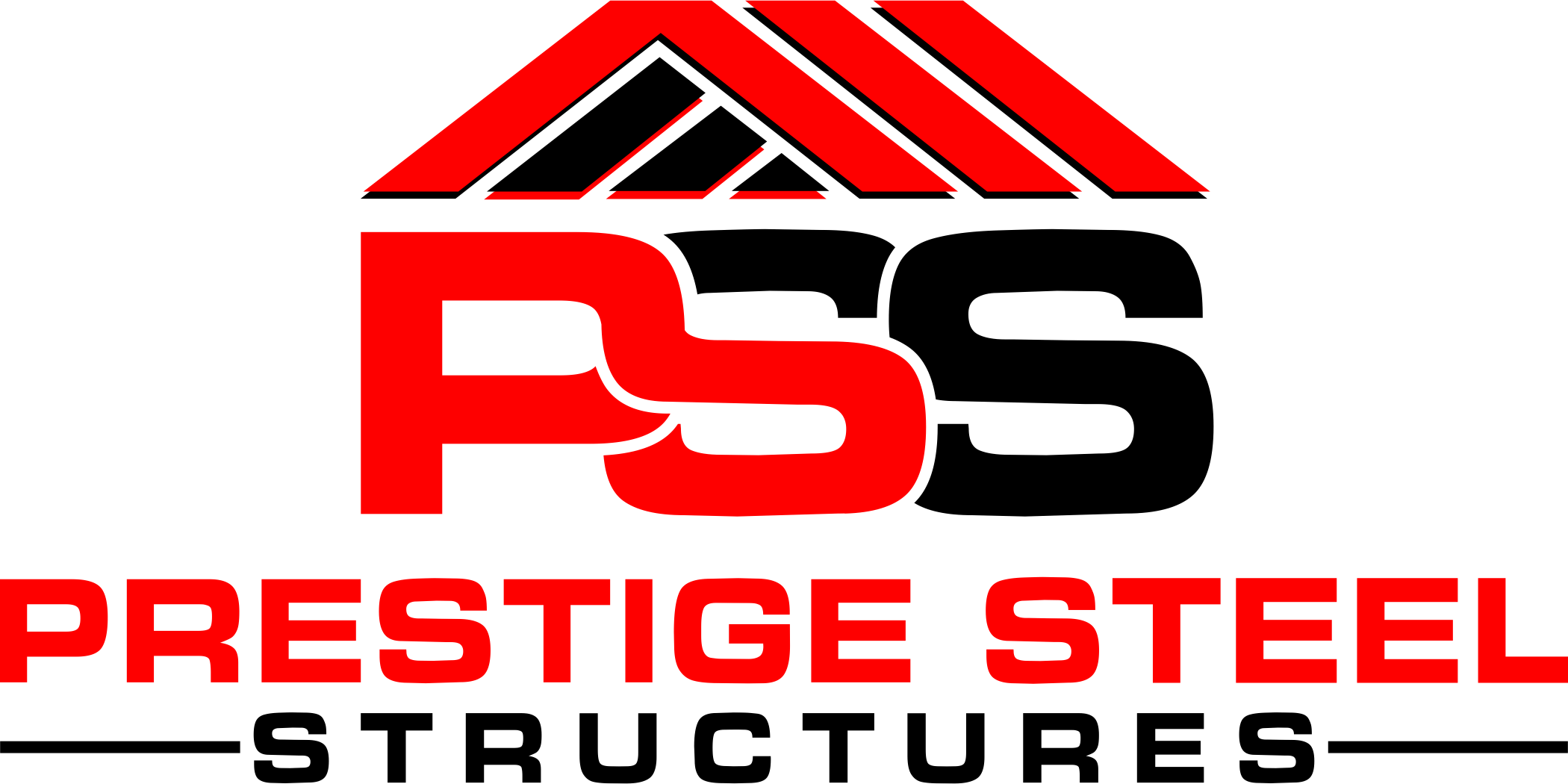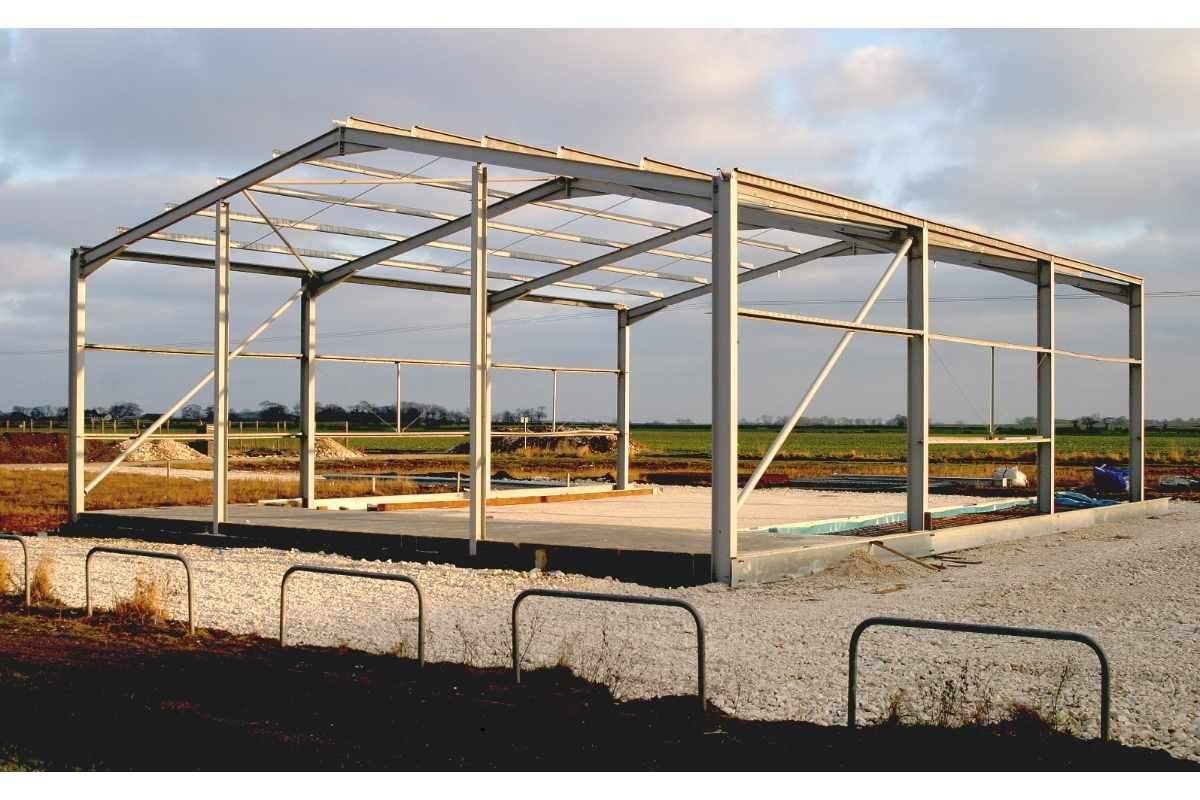When constructing a steel building, selecting the right foundation is crucial for ensuring stability, durability, and cost efficiency. Your foundation choice directly impacts the structure’s lifespan and overall expenses. The complexity of a foundation depends on factors such as building size and soil conditions, making it essential to choose wisely to maximize savings without compromising safety.
The Most Affordable Foundation Option: Floating Slab
For most steel buildings, a floating slab, also known as a slab-on-grade, is the most budget-friendly foundation option. This type of foundation consists of a concrete slab poured directly onto a prepared surface. The process includes leveling the ground, adding a gravel base for drainage, and then pouring the concrete. This method works best for smaller steel structures and sites with stable soil conditions and minimal frost concerns.
Expert Recommendation for Cost-Effective Stability
Prestige Steel Structures, a trusted provider of high-quality steel buildings, often suggests floating slabs as an economical foundation choice when conditions allow. While this option saves money upfront, they stress the importance of evaluating the specific needs of the project and soil conditions to ensure the building’s safety and longevity. Making the right foundation decision from the start can help avoid costly repairs and structural issues down the road.
By understanding your foundation options and considering expert recommendations, you can make an informed choice that balances affordability with structural integrity, ensuring your steel building stands strong for years to come.
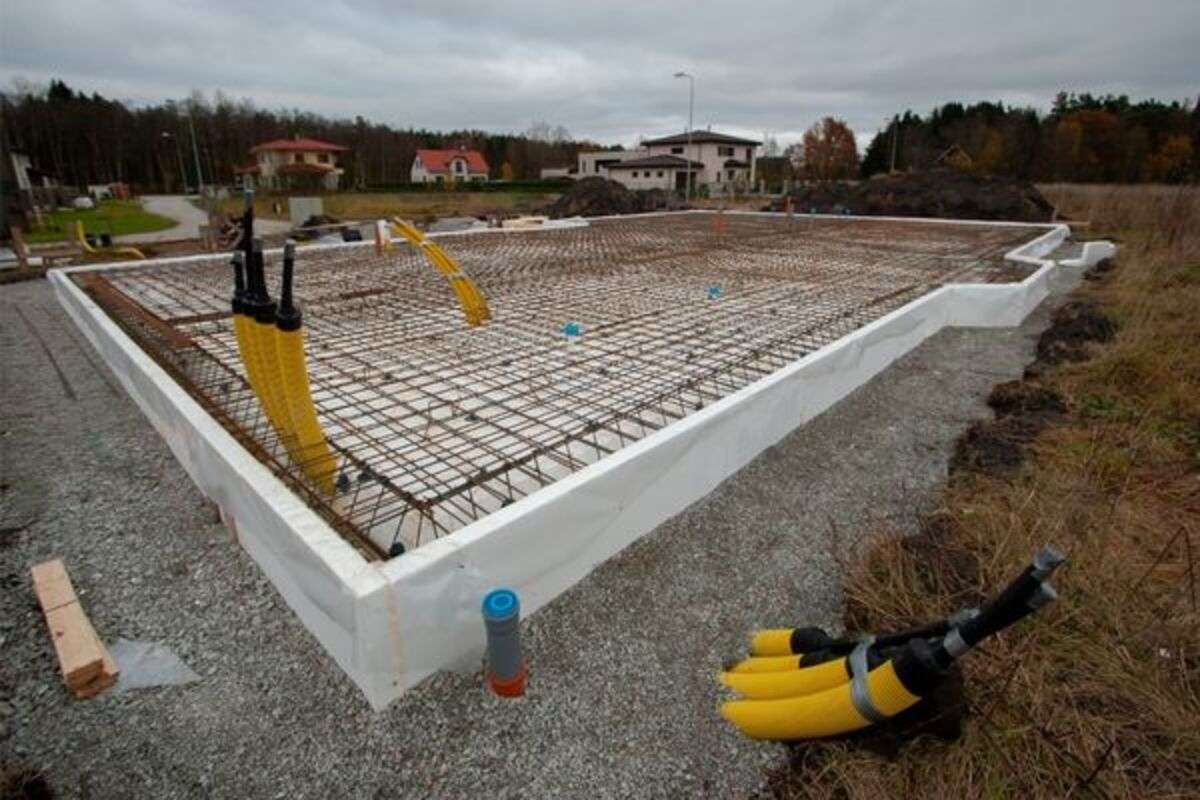
Types of Foundations for Metal Buildings in 2025
Choosing the right foundation for your metal building is crucial for both cost savings and structural integrity. A well-planned foundation enhances stability, durability, and long-term performance while keeping construction expenses in check. In 2025, advancements in materials and engineering techniques continue to improve foundation options, making them more efficient and adaptable to different project needs.
Here are the top foundation types to consider when planning your metal building project:
Concrete Slab Foundations: A Reliable Choice for Steel Buildings
Concrete slab foundations are one of the most preferred foundation types for steel buildings, offering stability, durability, and cost efficiency. These foundations consist of a flat, monolithic concrete pad poured directly onto the ground, evenly distributing the structure’s weight.
How Concrete Slab Foundations Are Installed
The installation process follows these essential steps:
- Site Preparation – The ground is graded and compacted to ensure a level and stable base.
- Reinforcement – Steel rebar or mesh is added to enhance strength and prevent cracking.
- Concrete Pouring – The concrete is poured and smoothed to create a solid, durable foundation.
- Curing Process – The slab is left to cure, ensuring it reaches optimal strength before construction begins.
Benefits of a Concrete Slab Foundation
- Simplicity – A straightforward installation process that doesn’t require complex engineering.
- Durability – Offers high resistance to weather elements, moisture, and pests.
- Structural Integrity – Provides strong support for metal buildings, preventing shifting or settling.
- Cost-Effective – Compared to more complex foundation types, a concrete slab is affordable and requires minimal maintenance.
Concrete slab foundations are ideal for warehouses, garages, workshops, and commercial buildings, especially in areas with stable soil and moderate climate conditions. If you’re looking for a long-lasting and efficient foundation, a concrete slab is a smart choice that enhances the longevity of your steel structure.
Gravel Pad Foundations: A Budget-Friendly Option for Steel Buildings
Gravel pad foundations are a simple, cost-effective alternative for smaller steel structures such as sheds, carports, and storage buildings. Instead of pouring concrete, this foundation type uses compacted gravel to create a stable and level base for the structure.
How Gravel Pad Foundations Are Installed
- Site Preparation – The area is cleared and leveled to ensure even weight distribution.
- Base Layer – A thick layer of crushed stone or gravel is laid down and compacted for stability.
- Edge Containment – Wooden or concrete borders may be added to keep the gravel in place.
- Final Compaction – The surface is compacted again to create a solid and durable base for the building.
Benefits of a Gravel Pad Foundation
- Cost-Effective – Less expensive than concrete in terms of materials and labor.
- Quick Installation – Requires less time and effort compared to a concrete slab.
- Drainage Efficiency – Prevents water buildup around the building, reducing the risk of moisture damage.
- Eco-Friendly – Uses natural materials and can be easily modified or removed if needed.
Gravel pad foundations work best for lightweight steel buildings that do not require deep anchoring, such as storage sheds, agricultural buildings, and carports. If you need a low-cost, quick-to-install foundation with excellent drainage, a gravel pad foundation is a practical solution for your project.
Pier and Perimeter Wall Foundations: Strong & Adaptable Solutions for Metal Buildings
Selecting the right foundation is essential for ensuring the stability and longevity of your steel building. Two highly effective options—pier foundations and perimeter wall foundations—offer distinct benefits, making them suitable for different project requirements.
Pier Foundations: Efficient & Cost-Effective Support
Also known as footing or pile foundations, pier foundations use deep cylindrical columns to anchor the steel structure into the ground. These foundations are strategically placed at key load-bearing points, reducing the need for a full concrete slab.
Key Advantages of Pier Foundations
- Reduced Material Use – Requires less concrete, making it a cost-effective choice.
- Ideal for Uneven Terrain – Works well on sloped or unstable soil where traditional foundations are impractical.
- Improved Drainage – Elevates the structure, helping to prevent moisture buildup and flooding issues.
- Quicker Installation – Less excavation and material usage mean a faster construction timeline.
Best Applications for Pier Foundations
Pier foundations are commonly used for agricultural buildings, barns, storage facilities, and lightweight metal structures in areas with challenging soil conditions.
Perimeter Wall Foundations: Strong & Protective
A perimeter wall foundation consists of a continuous concrete wall that runs along the entire base of a metal building. This type of foundation provides excellent stability and protection, making it ideal for larger or heavy-duty structures.
Key Advantages of Perimeter Wall Foundations
- Enhanced Stability – Provides a solid, durable base that resists soil shifting and movement.
- Superior Protection – Helps prevent water intrusion and protects the building from flooding.
- Supports Heavy Loads – Works well for larger metal buildings that require reinforced structural support.
- Versatile Design – Can be combined with slab flooring or gravel bases inside the perimeter.
Best Applications for Perimeter Wall Foundations
Perimeter wall foundations are best suited for industrial warehouses, commercial steel buildings, and structures in flood-prone or high-wind areas.
Floating Slab Foundations: A Flexible & Affordable Choice for Steel Buildings
A floating slab foundation is a type of concrete foundation that rests directly on the ground without footings, allowing it to adapt to soil shifts. This makes it a popular and cost-effective choice for metal buildings in areas with soft or expansive soil. Its simple construction process and reduced material requirements make it an attractive option for budget-conscious builders.
How a Floating Slab Foundation Works
- Site Preparation – The ground is leveled and compacted to ensure even weight distribution.
- Gravel Base Installation – A layer of crushed stone is added to improve drainage and prevent moisture buildup.
- Reinforcement – Steel rebar or wire mesh is placed within the slab to enhance strength.
- Concrete Pouring – The monolithic slab is poured and left to cure, creating a stable foundation for the metal building.
Benefits of a Floating Slab Foundation
- Flexibility – Adapts to soil movement without significant cracking or structural damage.
- Cost-Effective – Uses less material and labor compared to deep footings or perimeter walls.
- Quick Installation – Easier and faster to construct, reducing overall build time.
- Low Maintenance – Requires minimal upkeep while providing solid support.
Best Applications for Floating Slab Foundations
This foundation type is ideal for small to medium-sized steel buildings, including:
- Garages & Workshops
- Storage Sheds
- Agricultural Buildings
- Retail & Commercial Spaces
If you need a budget-friendly, easy-to-install foundation that can handle moderate soil movement, a floating slab foundation is an excellent choice. However, for heavier buildings or locations with extreme frost conditions, additional reinforcement or an alternative foundation may be required.
By choosing the right foundation, you ensure your metal building remains stable, durable, and cost-efficient for years to come.
T-Shaped Foundations: A Strong & Frost-Resistant Choice for Steel Buildings
A T-shaped foundation is a reinforced concrete foundation designed to withstand freezing temperatures and prevent frost heave. This foundation consists of a deep concrete footing placed below the frost line, with vertical foundation walls built above it to support the structure. This design makes it a sturdy and long-lasting choice for metal buildings in cold climates.
How a T-Shaped Foundation Works
- Excavation Below Frost Line – The foundation trench is dug deep enough to prevent frost heave.
- Concrete Footing Installation – A wide reinforced concrete footing is poured to support the structure.
- Foundation Walls Construction – Concrete or masonry walls are built on top of the footing to provide stability.
- Concrete Slab Pouring – A slab is poured within the foundation walls, completing the base of the building.
Benefits of a T-Shaped Foundation
- Frost Protection – Designed to prevent frost heave, keeping the structure stable.
- Durability – Provides long-lasting support, ideal for harsh winter climates.
- Strong Load Support – Works well for large or heavy steel buildings requiring extra reinforcement.
- Structural Stability – Reduces the risk of foundation shifting or cracking over time.
Best Applications for T-Shaped Foundations
This foundation type is ideal for metal buildings in regions with severe winters, such as:
- Industrial Warehouses
- Workshops & Garages
- Commercial Steel Buildings
- Agricultural Barns & Storage Facilities
If you’re constructing a steel building in a cold climate, a T-shaped foundation offers exceptional durability and frost protection. While it requires more excavation and materials than a floating slab, it ensures long-term stability and prevents damage from soil expansion.
By investing in the right foundation, you can ensure your metal building stands strong against the elements, no matter how extreme the weather conditions.
Basement Foundations: Expanding Space & Functionality for Metal Buildings
A basement foundation is a full-depth foundation that extends beneath the metal building, creating additional storage or usable space. Constructed with reinforced concrete walls and footings, this foundation supports the weight of the structure while offering extra livable or functional areas. Though less common in metal buildings, it is an excellent choice for projects requiring increased space and versatility.
How a Basement Foundation Is Built
- Excavation – A deep trench is dug to create space for the basement level.
- Footings & Walls – Reinforced concrete footings and basement walls are poured for structural support.
- Waterproofing & Drainage – A drainage system is installed to prevent water intrusion.
- Flooring & Insulation – The basement floor is poured, and insulation may be added for energy efficiency.
Benefits of a Basement Foundation
- Additional Space – Provides extra storage or can be used as a workshop, office, or living area.
- Versatility – Can be adapted for residential, commercial, or industrial metal buildings.
- Structural Strength – Reinforced concrete walls add durability and stability to the building.
- Temperature Regulation – Helps insulate the structure, keeping it warmer in winter and cooler in summer.
Best Applications for Basement Foundations
A basement foundation is ideal for metal buildings that require extra space, including:
- Residential Steel Homes
- Commercial Buildings with Storage Needs
- Workshops & Offices
- Agricultural Storage Facilities
If you need extra space beneath your steel building, a basement foundation is a great investment. While it requires higher excavation and material costs, it maximizes usable space and enhances the building’s functionality.
By choosing a basement foundation, you can expand the possibilities for your metal building, making it more efficient, practical, and valuable in the long run.
Crawl Space Foundations: Elevation & Utility Access for Metal Buildings
A crawl space foundation raises a metal building above ground level, creating a narrow space between the ground and the building’s floor. This type of foundation is particularly beneficial for areas with poor drainage, sloped terrain, or high moisture levels. It also provides easy access to plumbing, electrical, and HVAC systems, making maintenance more convenient.
How a Crawl Space Foundation Works
- Perimeter Footings – Concrete footings or piers are installed to support the building’s structure.
- Foundation Walls or Piers – Short walls or piers elevate the structure off the ground.
- Ventilation & Drainage – Vents and moisture barriers help prevent water buildup and mold growth.
- Flooring Installation – The building’s floor is constructed above the crawl space, keeping it off the ground.
Benefits of a Crawl Space Foundation
- Utility Access – Provides easy access for plumbing, electrical, and HVAC maintenance.
- Moisture Control – Keeps the building elevated, reducing the risk of water damage and mold.
- Better Insulation – Improves temperature regulation, making the structure more energy-efficient.
- Ideal for Sloped Terrain – Works well on uneven ground, eliminating the need for excessive excavation.
Best Applications for Crawl Space Foundations
This foundation is best for metal buildings in humid or flood-prone areas, including:
- Residential Steel Homes
- Workshops & Storage Buildings
- Retail or Office Spaces
- Agricultural & Utility Structures
Selecting the best foundation depends on climate, soil type, terrain, and the building’s purpose. While floating slabs and perimeter wall foundations provide solid stability, a crawl space foundation is a great solution for better moisture control, accessibility, and long-term durability.
By assessing your project’s specific needs, you can ensure that your metal building is built on a strong, cost-effective, and durable foundation that supports its longevity and function.
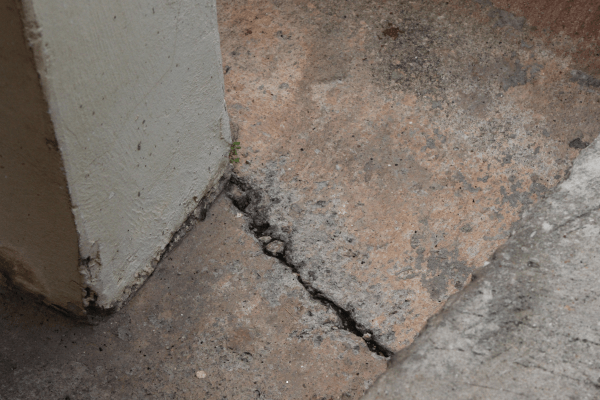
The Importance of a Solid Foundation for a Steel Building Project
A strong foundation is the backbone of any metal building, ensuring stability, safety, and durability. Without a properly designed foundation, even the highest-quality steel structure can suffer from shifting, structural damage, or moisture-related issues. Choosing the right foundation is a critical investment that protects the building from environmental stressors and extends its lifespan.
Key Reasons a Solid Foundation Is Essential
Integrity and Stability
The foundation supports the entire weight of the metal building, including walls, roof, and interior loads. A weak foundation can cause uneven floors, misaligned walls, and potential structural failure. Properly installed foundations distribute weight evenly, preventing shifting or settling over time. Without a solid foundation, frequent adjustments and costly repairs may be necessary, impacting the building’s functionality.
Longevity of the Building
A strong foundation minimizes wear and tear, helping to prevent premature deterioration. It protects against water infiltration, soil movement, and corrosion, ensuring long-term durability. By reducing stress on the structure, a solid foundation helps maintain the building’s integrity for decades. A well-built foundation can significantly extend the lifespan of a metal building, reducing maintenance costs over time.
Performance in Extreme Weather
A well-built foundation enhances the building’s ability to withstand heavy rain, wind, and temperature fluctuations. It provides stability against frost heave, soil expansion, and seismic activity, reducing the risk of damage. Ensuring proper drainage prevents water buildup, which can cause foundation cracks or structural weakening. Withstanding harsh environmental conditions is crucial for commercial, agricultural, and industrial steel buildings.
The Value of Investing in a Strong Foundation
Choosing the right foundation type, whether it is a floating slab, pier foundation, perimeter wall, or full basement, is crucial for the safety and longevity of your metal building. A solid foundation ensures that your steel structure remains secure, performs optimally, and withstands environmental stress for many years to come.
By investing in a well-designed foundation, you are not only enhancing structural stability but also protecting your investment for the long term. A durable foundation reduces repair costs, improves energy efficiency, and ensures compliance with local building regulations, making it a critical component of any metal building project.
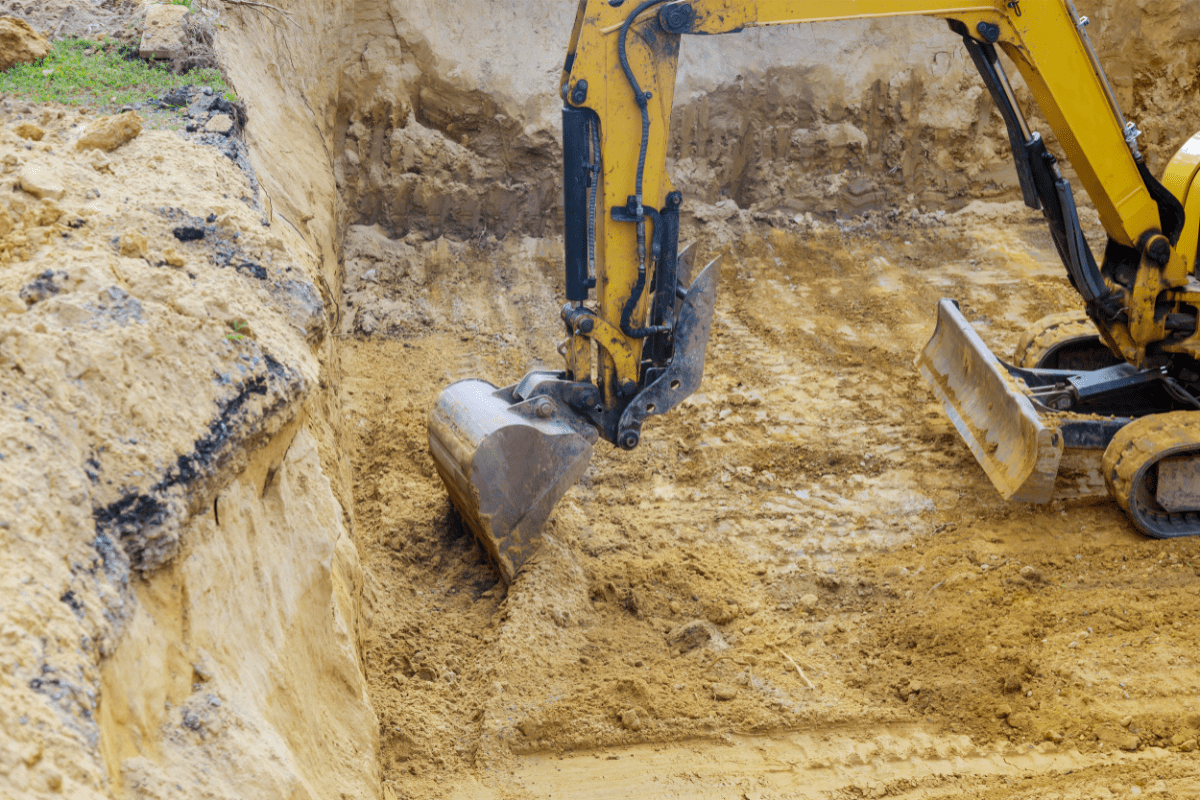
Determining the Right Foundation for a Steel Building
Choosing the correct foundation for a steel building is crucial for its stability, safety, and longevity. Several factors influence the selection process, including climate, soil conditions, and structural requirements. The right foundation not only provides support but also helps prevent shifting, settling, and structural damage over time.
Regional Considerations
Climate
The local climate plays a significant role in foundation selection. In regions with frequent freeze-thaw cycles, foundations must be designed to withstand expansion and contraction caused by temperature fluctuations. Frost-protected foundations, such as T-shaped or deep footings, are commonly used in colder climates to prevent frost heave.
Soil Condition
Different soil types require specific foundation solutions to ensure structural integrity. Before construction, a soil test is recommended to determine the best foundation type.
| Soil Type | Recommended Foundation |
| Sandy | Piers or Pilings |
| Clay | Reinforced Concrete Slab |
| Rocky | Surface Footings |
- Sandy Soils – May require deep foundations like piers or pilings to reach stable ground.
- Clay-Rich Soils – Prone to expansion and contraction, requiring a reinforced slab to prevent movement.
- Rocky Terrain – Often allows for surface footings since the natural ground provides strong support.
Building Requirements
Load-Bearing Capacity
The foundation must support the total weight of the steel structure, including live and dead loads. Structural engineers calculate the load and recommend the most appropriate foundation type to prevent excessive settlement or shifting.
Size and Design
The architectural design and size of the steel building directly impact foundation choice.
- Single-story steel buildings – Often use floating slab or perimeter wall foundations, as they require less complex structural support.
- Multi-story buildings – Need deeper foundations, such as raft or mat foundations, to evenly distribute weight and support additional loads.
Ensuring the Best Foundation Choice
By considering regional factors and building requirements, selecting the most cost-effective and durable foundation becomes easier. Consulting with a structural engineer or steel building supplier ensures the foundation is properly designed for the specific conditions of the site and structure.
A well-planned foundation is a long-term investment that guarantees the stability, efficiency, and longevity of a metal building.
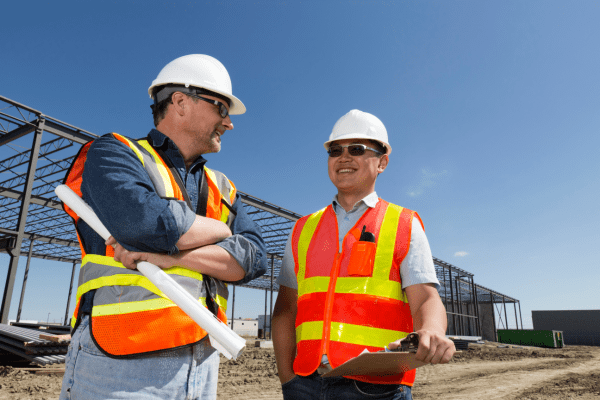
Prestige Steel Structures: Your Trusted Partner for Metal Building Foundations
Prestige Steel Structures is a leading provider of high-quality metal buildings, specializing in custom design, fabrication, and installation. While they offer expert guidance on preparing sites for steel buildings, their focus is on delivering durable and affordable steel structures, ensuring customers get a reliable and long-lasting solution.
Custom Steel Building Design and Fabrication
Prestige Steel Structures provides custom metal building designs tailored to meet various structural needs. Their team works closely with clients to ensure cost-effective and high-performance metal structures that meet industry standards.
Design Solutions
- Custom-engineered steel buildings to withstand different climates and soil conditions.
- High-strength materials ensuring stability and durability.
- Versatile designs suited for residential, commercial, agricultural, and industrial use.
Fabrication Excellence
- Efficient manufacturing to minimize waste and optimize material use.
- Precision engineering for strong and reliable steel buildings.
- Streamlined processes to enhance affordability and speed up construction.
Prestige Steel Structures’ commitment to quality ensures that every steel building is built to last while maintaining affordability.
Expert Installation for Steel Buildings
A well-installed steel structure is essential for longevity and performance. Prestige Steel Structures provides professional installation services, ensuring that buildings are set up efficiently and securely.
Installation Expertise
- A highly trained team with years of experience in metal building installation.
- Efficient construction methods to minimize delays and additional costs.
- Adherence to industry best practices for structural safety and reliability.
Site Preparation and Foundation Recommendations
- Expert guidance on the best foundation types for metal buildings.
- Assistance in choosing cost-effective solutions based on the site’s soil, climate, and project needs.
- Compatibility with various foundation types, including floating slabs, pier foundations, gravel pads, and perimeter walls.
While Prestige Steel Structures does not directly provide foundation construction, they offer expert advice to help customers select the best foundation solution for their steel building.
Conclusion
Choosing the right foundation is essential for the stability, durability, and long-term performance of a steel building. The proper foundation type—whether a floating slab, pier foundation, perimeter wall, or gravel pad—depends on site conditions and structural requirements. By working with Prestige Steel Structures, customers receive expert guidance, top-quality metal buildings, and professional installation, ensuring a strong, resilient, and cost-effective solution that stands the test of time.
FAQs
What is the most cost-effective foundation for a steel building?
A floating slab foundation is the most affordable option, requiring minimal materials and labor while providing stability for small to mid-sized structures.
Can I use a gravel pad foundation for a large steel building?
No, gravel pad foundations are best for lightweight steel structures, such as carports and sheds, and do not support heavy loads.
Which foundation is best for areas with freezing temperatures?
A T-shaped foundation is ideal for cold climates as it extends below the frost line, preventing soil movement and frost heave.
How do I determine the best foundation for my steel building?
Consider soil type, climate, building size, and load requirements. Consulting a structural engineer ensures the right choice for durability and safety.
Do all steel buildings require a concrete foundation?
No, smaller buildings may use gravel pads or pier foundations, but larger or heavy-duty structures generally require concrete slabs or perimeter walls for support.

